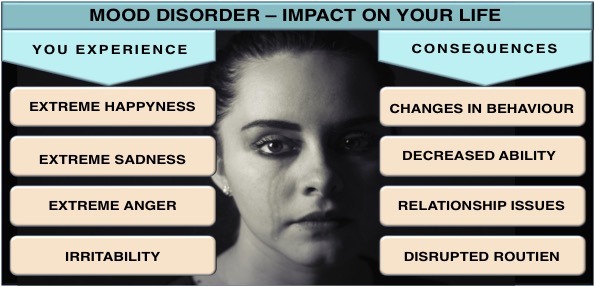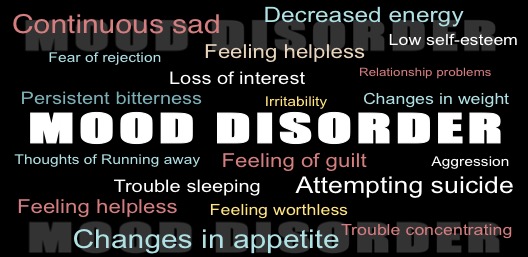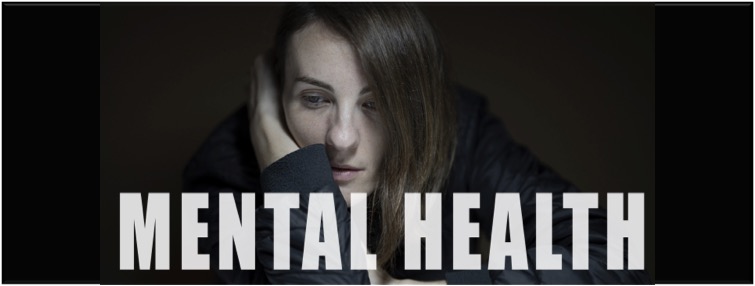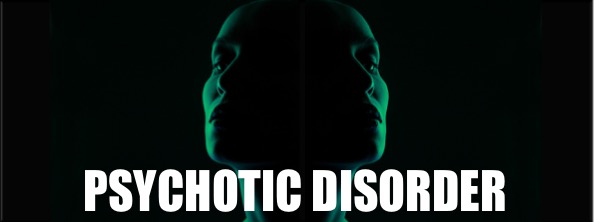Generally mental health professionals use this term “Mood Disorder” to broadly describe different types of depression and bipolar disorders. But, to properly understand “what are mood disorder” actually, you need to dig the topic really deeper.
Do you know? People of all the ages, children, teens, and adults may have mood disorders. May be the children and teens may not have the same kind of symptoms as adults do. It’s difficult to diagnose mood disorders in children because most of the time they are not they able to express their feeling.
Mood disorders can be treated with the help of therapy, antidepressants, support and self-care.
What are mood disorder
Mood disorder is known as an affective disorder also. It is a group of mental or behavioural disorders where a disturbance in the some one’s mood is the main and basic feature.
A mood disorder is basically, a mental health condition that severely affects your emotional state, impacts your mood and its related functions.
Mood disorder is a mental health condition in which you experience extreme happiness, extreme sadness or sometimes both for long period of time . Certain mood disorders involve other emotions, such as anger and irritability.
Depending on the situation it is absolutely normal for your mood to change. Mood disorders cause noticeable changes in your behaviour and that may affect your ability to perform your routine activities at home or at work.

Common Symptoms of Mood Disorder
Depending on the age and type of mood disorder, you may have different symptoms. Here are the most common symptoms of a mood disorder.
- Continuous sad, anxious or “empty” mood and having low self-esteem
- Feeling helpless or hopeless or worthless
- Excessive feeling of guilt
- Loss of interest in routine activities or activities that were once enjoyed including sex
- Relationship problems
- Trouble sleeping or sleeping too much
- Changes in appetite and weight
- Trouble concentrating and decrease in the ability to make decisions

- Decreased energy and frequent physical complaints like headache
- Stomach-ache, or tiredness, that don’t get better over the treatment
- Running away or thoughts of running away from home
- Increased sensitivity to failure and rejection
- Persistant Irritability, bitterness or aggression
- Frequent thoughts of death or suicide. Attempting suicide or wishing to die. (Note: People with these symptoms must get treatment immediately)
The most common type of mood disorders are depression and bipolar disorder.
Types of mood disorder
What are Mood Disorder – The answer of this question can be separated into two categories.
- Depressive Disorders and
- Bipolar and Related Disorders
Depressive disorders
Depression is a common mental health condition and feeling sad and hopeless are depressive symptoms. Depressive disorder can have a considerable impact on your life because it affects your thinking, memory, eating and sleeping. These are several different types of depression
Major Depressive Disorder
Depression is a mood disorder also called major depressive disorder or clinical depression. It causes a persistent feeling of sadness and loss of interest.
When someone experiences continuous and intense feelings of sadness for longer periods, then they may have a mood disorder called major depressive disorder (MDD).
MDD, is a medical condition that need your attention because it can affect multiple areas of your life. It impacts your mood and behaviour along with other physical functions, such as appetite and sleep. With MDD you face trouble doing normal daily activities, and sometimes you feel as if life is not worth living.
Many people with major depressive disorder feel better with medication or psychotherapy or both.
Psychotic major depression
Some people who have sever major depressive disorder may also experience hallucination (Seeing testing feeling or smelling things that are not there, or hearing a voice telling you that you are no good or worthless) or delusional (thoughts or beliefs that are unlikely to be true. such as, intense feelings of worthlessness, failure, or having committed a sin) thinking which are symptoms of psychosis.
Depression is always a serious problem. But, major depressive disorder with psychosis is more serious than depression without psychosis. The combination of depression with delusions and hallucination put you in dangerous situations, where your beliefs and perceptions suggest you to heart yourself or someone else.
Postpartum depression
Postpartum depression is the kind of depression which happens after having a baby. It is a complex mix of physical, emotional, and behavioral changes in a women after giving birth. A rapid drop in hormones after delivery is known fact.
Levels of female reproductive hormones estrogen and projesteron increase ten times during pregnancy. After delivery they drop sharply. By 3 days after delivery the levels of these hormones come down to level they were before pregnancy.
In addition to hormonal changes, the psychological and social changes in parents, of having a baby create an increased risk of depression.
Parents dealing with postpartum depression (PPD) experience emotional high and lows. Therefore episodes of frequent crying, fatigue, guilt, anxiety may create trouble caring for their baby. Postpartum depression can be treated completely with medication or counselling or both.
Premenstrual dysphoric disorder (PMDD)
Women with PMDD (premenstrual dysphoric disorder) have PMS (premenstrual syndrome) symptoms Like bloating, headaches and breast tenderness in the weeks before their period. Premenstrual dysphoric disorder (PMDD) is considered to be a more serious form of premenstrual syndrome (PMS).
But PMDD also causes severe anxiety, depression and mood changes.
These symptoms improve within a few days after your period starts, but they can be severe enough to interfere with your life. Infact PMDD causes extreme mood shifts that’s how it disrupt daily life and damage relationships.
Some women with PMDD become suicidal. Hormonal birth control (the pill) and antidepressants can relieve symptoms.
This type of mood disorder occurs 7 to 10 days before menstruation and goes away within a few days from the start of the menstrual period. This is considered to be a more serious form of premenstrual syndrome (PMS). Researchers believe this condition is brought about by the hormonal changes related to the menstrual cycle. Symptoms include anger, anxiety, irritability, depression as well as insomnia.
Disruptive mood disregulation disorder (DMDD)
The temper tantrums are quite common in kids, but DMDD is something more than childhood moodiness that we see normally.
The main symptoms include irritability, emotional dysregulation, and behavioural outbursts. Outbursts are normally in the form of severe temper tantrums.
Those angry outbursts that kids experience with DMDD are extreme, very intense, and can lead to considerable disruption in many areas of a kid’s life. To be diagnosed with DMDD a child must be between the ages of 6 and 18.
Seasonal affective disorder (SAD):
Seasonal affective disorder (SAD) also called Seasonal depression. It’s a type of depression that’s provoked by seasonal change and occurs during certain seasons of the year. Typically SAD starts in the early winter or late autumn and lasts until spring or summer. Seasonal affective disorder begins and ends at about the same times every year.
Symptoms of winter seasonal affective disorder may resemble those of major depression. They tend to disappear or lessen during spring and summer.
Persistent depressive disorder
Persistent depressive disorder (PDD) ia also called as (Dysthemia). It is mild or moderate depression that doesn’t go away. It is not as severe as the major depressive disorder, but it’ is ongoing. This chronic form of depression must last for at least two years.
You lose interest in normal routine activities. Feeling of lack of productivity and hopelessness keps your self-esteem low and you have an overall feeling of inadequacy.
With persistent depressive disorder, you find it really hard to uplift your mood even on happiest occasions. You may be described as a person who have a gloomy personality, Who is constantly complaining, and someone who is incapable of having fun.
A person with Persistent depressive disorder has a sad, dark or low mood and two or more other symptoms of depression.
Catatonic depression
Catatonic depression is a very rare and severe type of major depression. It involves disturbances in motor behaviour and other symptoms. With this disorder the person goes mute or in a condition of completely suspended sense or sensibility. Either the person become immobile or display purposeless or sometimes bizarre movements.
Generally a person with catatonic depression does not respond to things happening around him. He become silent and motionless.
Bipolar disorders
Bipolar disorder also known as manic depression. It is a mental health condition which causes extreme mood swings like emotional highs (mania or hypomania) and lows (depression).
When your mood shifts to mania or hypomania, you may feel excited and full of energy, but when you feel depressed, you become sad or hopeless and lose interest or pleasure in most activities. These mood shifts may affect your sleep, energy, activities, judgments, behaviour and also the ability to think clearly.
Bipolar disorder is a lifelong mood disorder. Episodes of these mood swings may occur fewer or multiple times in a year.
There are few different types of bipolar and related other disorders. They may include hypomania or mania and depression.
What is Mania Hypomania and Depression
Mania (Manic Episodes)
Mania is a mental condition in which you have episodes of abnormally elevated or irritable mood along with energy, emotions activities. This highly energized level of physical and mental activity and behavior is noticeable by others.
People with manic states can indulge in such activities that cause them physical, financial or social harm, such as driving recklessly, or suddenly spending extreme amounts of money or gambling.
Hypomania (Hypomanic Episodes)
Hypomania is a form of mania but not that severe. It describes milder symptoms of mania, where someone does not have delusions or hallucinations. It doesn’t last as long as manic episodes and also it doesn’t interfere with routine functioning as much.
Depression (Depressive episodes)
Depressive episodes are the times when the person feels very sad or depressed. Symptoms are same as those described in major depressive disorder. You experience loss of interest in most activities, as well as tiredness, change in appetite, and Feelings hopelessness.
This is a condition in which someone never has manic or hypomanic episodes.
Bipolar I disorder
People with bipolar I disorder must have had at least one manic episode, in their life for at least one week. It doesn’t matter that they ever experiencing a depressive episode or not.
With bipolar I disorder you have extreme erratic behaviour, with manic “up” periods that last at least a week. These “up” Periods are so severe that you need medical care. Sometimes there are extreme “down” periods also that last at least 2 weeks.
Most people with bipolar I disorder will have episodes of both mania and depression, but an episode of depression isn’t necessary for a diagnosis.
Bipolar II disorder
With Bipolar II disorder you have had at least one major depressive episode and at least one hypomanic episode, but you never had a manic episode.
Bipolar II disorder causes cycles of depression that are similar to those of bipolar I. Person with this disorder also experiences hypomania, which is not as severe as mania. Hypomanic episodes are not as intense or disruptive as manic episodes. People with bipolar II disorder are generally able to handle daily responsibilities.
Cyclothymia disorder (cyclothymia)
People with cyclothymic disorder have a chronically unstable mood state. They experience hypomania and mild depression for at least two years.
Cyclothymia is a rare mood disorder, also called cyclothymic disorder. Cyclothymia also causes emotional ups and downs from base line, but these fluctuations are not as extreme as those in bipolar I or bipolar II disorder.
With cyclothymia when your mood shifts up and down, you may feel on top of the world for a time, latter you experience a period when you feel somewhat down. Between these cyclothymic high and low episodes, you may feel stable and fine for some time.
The highs and lows of cyclothymia are not as extreme as those of bipolar disorder. but they may interfere your ability to function and hence increase your risk of bipolar I or II disorder.
Substance-induced mood disorder
This describes a person who is experiencing symptoms of bipolar disorder or depressive disorder due to the side effects of medicine, any kind of drug abuse, alcoholism, consumption or exposure to toxins, or any other forms of treatment.
Due to another medical condition
Some medical conditions can actually cause symptoms of bipolar or depressive disorder . This is diagnosed when there is evidence that the mood disturbance is the direct physiological result of another medical (not mental) condition like cancer, injuries, infections, and chronic illnesses. These can trigger symptoms of depression.
Symptoms of Manic and Depressive Mood Disorder
Different mood disorders have different symptoms or different patterns of symptoms.
Mood disorders normally have symptoms which affect your mood, sleep, thinking abilities, eating pattern and energy level.
Symptoms of hypomanic or manic episodes:
- Feeling extremely energized, excited or thrilled.
- Rapid speech or fast movement.
- Moments of agitation, restlessness or irritability.
- Displaying risk-taking behaviour, like gambling, spending more money than normal or driving rash or recklessly.
- Racing thoughts.
- Trouble in sleeping or Insomnia.
Symptoms of depressive episodes
- Feeling sad most of the time in everyday life.
- Feeling sluggish or continuous feeling lack of energy.
- Feeling helpless, worthless or hopeless.
- Losing interest in activities that formerly enjoyed.
- Frequent repeted thoughts about death or attempting suicide.
- Difficulty in concentrating or focusing on anything.
- Sleeping too much or not sleeping enough.
- Loss of appetite or overeating.
Causes for Mood Disorders
What causes mood Disorder is still difficult to specify. Depression is supposed to be caused by combination of few environmental, biological, psychological and genetic factors. As per most enduring theories, neurotransmitters (chemicals in the brain) cause an
imbalance which leads to depression. Still this theory has not been verified. Researchers believe that several factors that contribute in developing mood disorders are
Biological factors
The areas of brain, responsible for controlling feelings and emotions are called amygdala. An enlarged amygdala in brain imaging tests has been found in people with mood disorders.
Genetic factors
People with a strong family history of mood disorder are more likely to experience mood disorders.
Environmental factors
Childhood abuse and stressful changes in life, such as death of a loved one, traumatic events, constant stress are major risk factors for the development of a mood disorder.
Mood Disorder Treatment Options
Mood disorders are primarily treated by medications and psychotherapy. Even with treatment though, it’s common for mood disorders to continue throughout a lifetime or to come and go on occasion. Educating about mood disorders help suffering individuals recognize patterns of behaviour and thoughts which are indicative of a mood disorder resurfacing, and guide them to seek additional treatment.
Antidepressants and anti-anxiety medicine are prescribed to individuals dealing with mood disorders to reduce emotional distress. Most mental healthproviders recommend medications in combination with psychotherapy.
Main focus of psychotherapy or talk therapy, is changing thought patterns and behaviors. Cognitive behavioral therapy is usually considered the benchmark therapy for treatment of mood disorders. it’s been found to have considerable positive treatment effects, and in some cases, psychotherapy alone is enough to treat a mood disorder.
Mood disorders, like bipolar depression, are normally treated with lifelong medication of mood stabilizers in combination with psychotherapy. additionally, the severity of some mood disorders may cause hospitalization, especially if the affected individuals has tried to inflict harm on themselves or others or have thoughts or attempted suicide.
Halenesspro Opinion
In mood disorders, symptoms are more intense than what an individualmay normally feel from time to time. It becomes a concern if these feelings continue over time and interfere with one’s interest in family, friends, community or work.
The symptoms of mood disorders may appear as other conditions or mental health problems. Your mood disorder is unlikely to easily go away on its own, and it’s going to get worse over time. Seek professional help before your mood disorder becomes severe, it’s going to be easier to treat early on.




